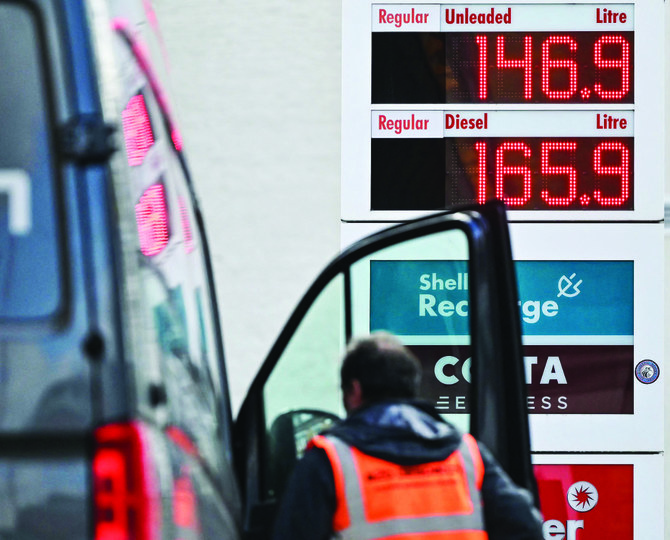LONDON: Oil prices fell in volatile trade on Friday, reversing earlier gains of more than $1 a barrel, as banking sector fears set crude on course for its biggest weekly decline in months, according to Reuters.
Brent crude futures fell by 76 cents, or 1.02 percent, to $73.94 a barrel by 1322 GMT. US West Texas Intermediate crude was down 52 cents, or 0.76 percent, at $67.83.
Both benchmarks hit more than one-year lows this week. Brent was on track for its biggest weekly fall since December at more than 10 percent, while WTI was heading toward a loss of more than 11 percent, its biggest since last April.
Pressure this week followed the collapse of Silicon Valley Bank and Signature Bank and trouble at Credit Suisse and First Republic Bank.
Prices recovered some ground on Friday after support measures from the European Central Bank and US lenders, but dropped again when SVB Financial Group said it had filed for reorganization. The news also sent shares of big US banks down by more than 1.5 percent in pre-market trading.
FASTFACT
Analysts expect China’s demand recovery to add price support, with US crude exports to China in March heading toward their highest in nearly two and a half years.
“The conditions for volatile trading remain intact. The oil price roller-coaster is pausing for breath but is by no means over,” said Stephen Brennock of oil broker PVM.
The drop in prices highlights “the continued fragile state of the market,” said Ole Hansen, head of commodity strategy at Saxo Bank.
Analysts do, however, expect constrained global supply to support prices in the foreseeable future.
Members of he Organization of the Petroleum Exporting Countries and its allies, known as OPEC+, attributed this week’s price weakness to financial drivers rather than any supply and demand imbalance, adding that they expected the market to stabilize.
WTI’s fall this week to less than $70 a barrel for the first time since December 2021 could spur the US government to start refilling its Strategic Petroleum Reserve, boosting demand.
And analysts expect China’s demand recovery to add price support, with US crude exports to China in March heading toward their highest in nearly two and a half years.
Saudi Arabia and Russia in a meeting on Thursday affirmed their commitment to OPEC+’s decision last October to cut production targets by two million barrels per day until the end of 2023.
An OPEC+ monitoring panel is due to meet on Apr. 3.














